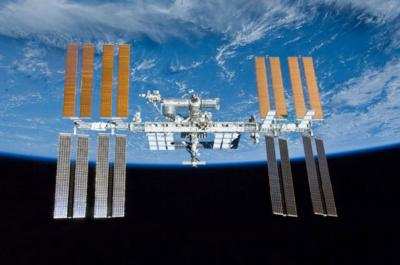Experiments Funded By The Center For The Advancement Of Science In Space (CASIS)
A proposal from Florida Institute of Technology to test a special camera on the International Space Station was selected for funding by the Center for the Advancement of Science in Space (CASIS).

The test, to be undertaken next year, involves building an extreme contrast ratio camera into an 8-inch long box that will be installed in a cabinet with other research projects. The cabinet will then be placed outside the space station for 90 days while researchers run their tests, which will include monitoring how the space environment affects aspects of the camera's highly specialized sensor.
The project is led by Daniel Batcheldor, associate professor of physics and space science at Florida Tech. Joining Batcheldor are Sam Durrance, professor of physics and space science at Florida Tech, and Zoran Ninkov, professor of imaging science at Rochester Institute of Technology.
"This is a very exciting project because we expect it to lead to discoveries in both remote sensing of the Earth from orbit and for many fundamental areas of space-based astronomy," Batcheldor said.
Future commercial use of the camera's sensor could serve a range of purposes, from astronomy initiatives to Earth observation enterprises, including environmental monitoring and defense interests.
"CASIS congratulates Dr. Batcheldor and Florida Tech on their proposal to utilize the NanoRacks External Platform in their efforts to improve existing charge-coupled device technology," said CASIS Director of Portfolio Management Warren Bates. "The ISS is a unique testbed capable of yielding results not possible on Earth, and we look forward to working with the university as their researchers attempt to develop new sensors from the distinctive vantage point of the station to ultimately improve life on our planet."
Once contracts between Florida Tech and CASIS have been finalized, a 2015 launch to the ISS is likely. In the meantime, the team will work with engineers at camera supplier ThermoFisher Scientific Inc., to ensure the payload meets the power consumption, volume, mass and other requirements necessary to operate an investigation onboard the ISS.

This project began in 2012 when Batcheldor was awarded a small research grant from the American Astronomical Society to buy and test an extreme contrast ratio camera on Florida Tech's 32-inch telescope. These ground tests were successful, and Batcheldor and his team are now going to "flight qualify" this type of camera on the ISS so that it can be used on future remote-sensing and space-based observatory missions.
This work continues Florida Tech's heritage of developing cutting-edge, high-impact technology and partnering with the space industry, noted Hamid Rassoul, dean of the university's College of Science.
"Combining the knowledge and strength of our experiences, Drs. Batcheldor and Durrance have taken up the challenge to develop an innovative, efficient, extreme-contrast camera to advance the architecture of the next generation of high-sensitivity instruments for astrophysical and remote sensing research," Rassoul said.
The extreme contrast ratios the camera is equipped to handle are those where the brightness ratio between a bright and faint object is 1 billion, something akin to trying to spot a candle next to a lighthouse. Being able to record such images is important in making observations of planets around other stars and for a range of remote sensing applications.
In addition to project leader Batcheldor, Durrance, an astronaut who spent 26 days in space over two shuttle missions, brings extensive experience with designing, building and operating space-based instrumentation. He also has an interest in the observations of planets around other stars. RIT's Ninkov has been responsible for designing and testing much of the camera electronics in a laboratory environment.
 Airborne 05.10.24: Icon Auction, Drunk MedEvac Pilot, Bell ALFA
Airborne 05.10.24: Icon Auction, Drunk MedEvac Pilot, Bell ALFA ANN's Daily Aero-Term (05.13.24): ILS PRM Approach
ANN's Daily Aero-Term (05.13.24): ILS PRM Approach ANN's Daily Aero-Linx (05.13.24)
ANN's Daily Aero-Linx (05.13.24) Airborne-NextGen 05.07.24: AI-Piloted F-16, AgEagle, 1st 2 WorldView Sats
Airborne-NextGen 05.07.24: AI-Piloted F-16, AgEagle, 1st 2 WorldView Sats Airborne 05.08.24: Denali Update, Dad-Daughter Gyro, Lake SAIB
Airborne 05.08.24: Denali Update, Dad-Daughter Gyro, Lake SAIB




